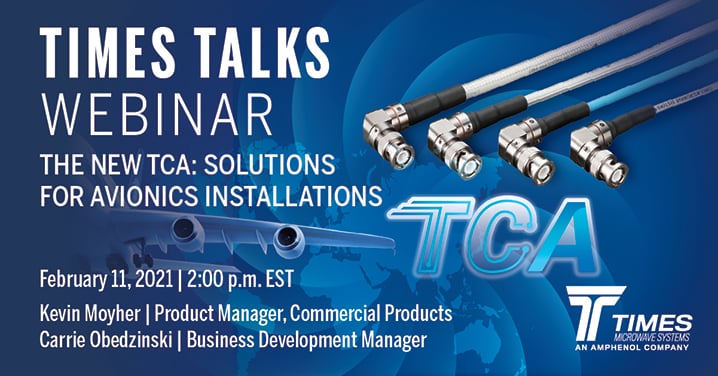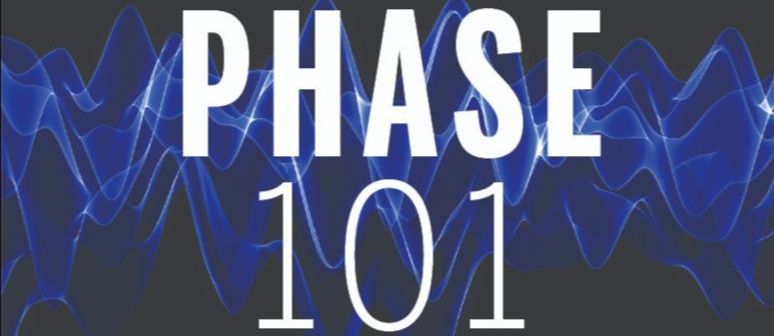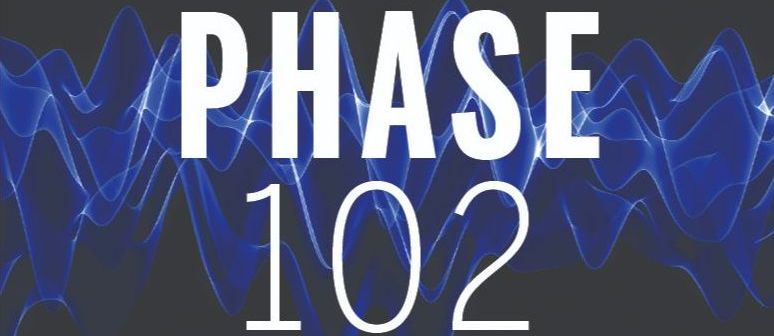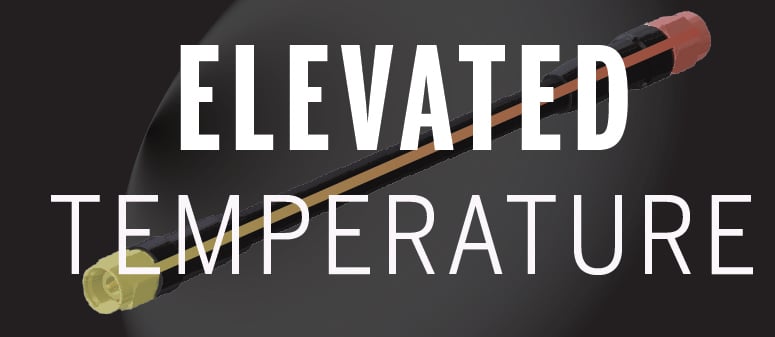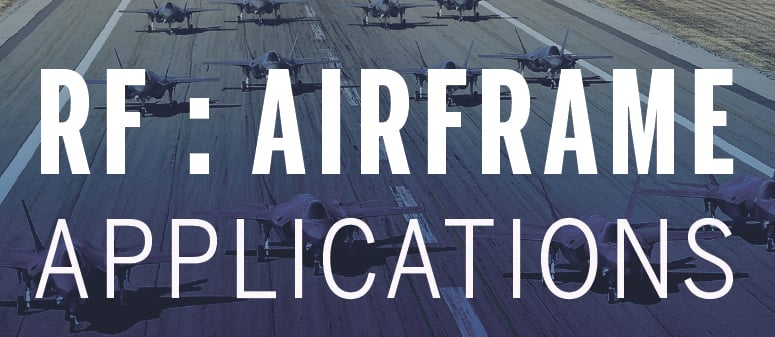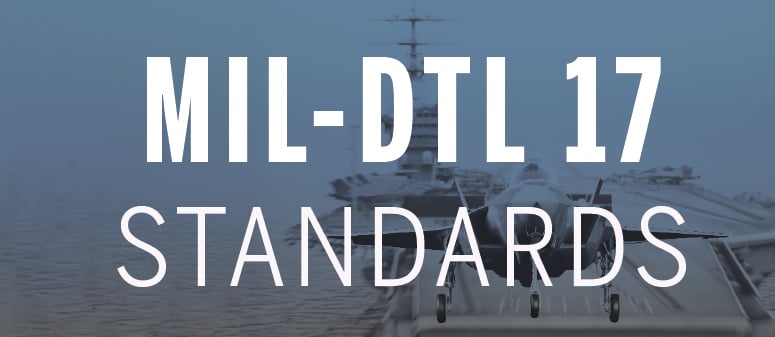
Times Talks
Coaxial cables and connectors are often overlooked in many military and commercial systems. Until a signal comes up short—literally! They make interconnections in many systems and must cover broad bandwidths, over wide temperature ranges, and often while withstanding vibration.
Introduced in 2020, the Times Talks webinars cover everything you need to know about RF/microwave coaxial cables, from DC through millimeter-wave frequencies—for commercial, military, industrial, and medical applications. Each talk is presented by our experts and is backed by real-life examples and test results.
Register for our upcoming webinars or watch our previous presentations, and learn why thousands of engineers and RF experts already attend.
2021 Times Talks Webinars
Webinars on Demand
Solutions for Low PIM Applications
Kevin Moyher| Product Manager
The five most common RF use cases that require coaxial cables and connectors include communications, data, vision systems, high power applications, and test and measurement. Each type has its individual characteristics and challenges.
In this webinar, our director of commercial sales, David Kiesling will discuss the fundamental differences between the five use cases from a big picture perspective. He will provide tips for selecting an optimal RF cable solution for the most demanding needs.
Outside the Box Solutions for Inside-the-box Applications
Dave Kiesling| Director of Commercial Sales
The five most common RF use cases that require coaxial cables and connectors include communications, data, vision systems, high power applications, and test and measurement. Each type has its individual characteristics and challenges.
In this webinar, our director of commercial sales, David Kiesling will discuss the fundamental differences between the five use cases from a big picture perspective. He will provide tips for selecting an optimal RF cable solution for the most demanding needs.
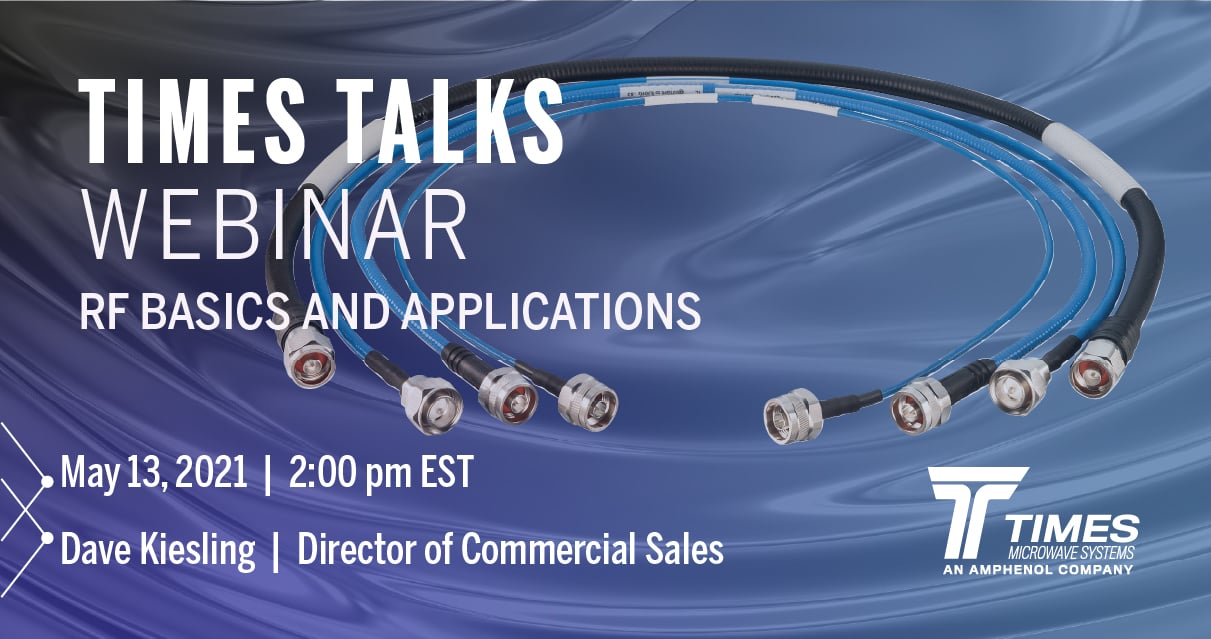
Reliable Solutions for Test and Measurement Applications
John Muzzio| Applications Engineer
The five most common RF use cases that require coaxial cables and connectors include communications, data, vision systems, high power applications, and test and measurement. Each type has its individual characteristics and challenges.
In this webinar, our director of commercial sales, David Kiesling will discuss the fundamental differences between the five use cases from a big picture perspective. He will provide tips for selecting an optimal RF cable solution for the most demanding needs.
RF Applications: The Big Picture
Dave Kiesling| Director of Commercial Sales
The five most common RF use cases that require coaxial cables and connectors include communications, data, vision systems, high power applications, and test and measurement. Each type has its individual characteristics and challenges.
In this webinar, our director of commercial sales, David Kiesling will discuss the fundamental differences between the five use cases from a big picture perspective. He will provide tips for selecting an optimal RF cable solution for the most demanding needs.

The Challenges of High Power in RF Applications
Dave Slack | Director of Engineering
Airborne antennas must be mechanically secure in interference free locations and in areas where signals can be optimally received. Simple right? Not really. Often, these locations are in hard to access places, or exposed to extreme conditions. Then, these antennas must be electrically matched to the receiver and transmitter they serve to avoid distorted signals.
In our upcoming Times Talks Webinar our Senior Applications Engineer, Dave Murray will demonstrate outline options to ease your installation and save you money on antennas, maintenance costs and much more. Dave has over 40 years of experience in the airframe and RF industry. For the past 25 years, Dave has led numerous aerospace projects and developed solutions for both electrical and mechanical RF challenges.
RF Interconnect Solution for Complex Antenna Installations
Dave Murray | Applications Engineer
Airborne antennas must be mechanically secure in interference free locations and in areas where signals can be optimally received. Simple right? Not really. Often, these locations are in hard to access places, or exposed to extreme conditions. Then, these antennas must be electrically matched to the receiver and transmitter they serve to avoid distorted signals.
In this Times Talks Webinar our Senior Applications Engineer, Dave Murray will demonstrate outline options to ease your installation and save you money on antennas, maintenance costs and much more. Dave has over 40 years of experience in the airframe and RF industry. For the past 25 years, Dave has led numerous aerospace projects and developed solutions for both electrical and mechanical RF challenges.
RF in Space: 5 Steps to Find the Best Interconnect Supplier
Maria Calia | Senior Program Manager
Space is arguably the most challenging technical environment for physical hardware to survive and function. Establishing a reliable RF interconnect for communications is critical, and only the best suppliers can meet the unique challenges of its harsh environment and long-term deployment requirements. Finding and qualifying an RF to interconnect supplier for Space applications can be a lengthy and costly process—some suppliers offer standard qualifications and documentation for basic products in an effort to simplify the process. But in Space, nothing is standard—or easy.
In this Times Talks webinar, Maria Calia, our Senior Program Manager and Space expert outlines the five steps you should take to ensure the best outcomes from your RF supplier. With many years of experience, Maria helps you avoid costly mistakes. Learn to identify red flags and find the best partner for your RF interconnect solutions in Space.
The New TCA: Solutions for Avionics Installations
Carrie Obedzinski | Business Development Manager
Kevin Moyher | Product Manager
With a long history of delivering to the aviation community, we understand our customers’ needs for reliability, quality, and delivery. As a result of decades of heritage, we designed a complete system of cables, connectors, tools, and accessories that make installation easy and clean—the TCA family.
Join Carrie Obedzinski and Kevin Moyher, two leading industry experts, as they discuss the challenges and requirements of airframe installations. From reduced inventory and FOD to time and cost savings, customers around the world have tested and approved thousands of TCA assemblies.
Register to learn what the buzz is all about.
Phase Stability
Phase is a key parameter for many RF/microwave systems that use it for detection and measurement, including radars, direction-finding (DF) systems, and missile defense systems. Phase must be accurately controlled in the components within those systems, such as coaxial cables and connectors. Watch the Times Talks below to learn more about RF assemblies and phase requirements.
In “Phase 101,” Dave Slack explains what is phase, how it is determined in coaxial cables and connectors, and various methods for achieving precise phase matching and tracking between multiple sets of cable assemblies.
Dig deeper into the impact of temperature in phase behavior. Learn about the PTFE “knee” and what it means for phase performance. Get advice on how to minimize temperature effects using materials like silicon dioxide (SiO2) and TF4.
Extreme Applications and Elevated Temperatures
Critical RF applications such as aerospace surveillance, medical diagnostics, and automated test systems increasingly require interconnects to perform at temperatures as high as 600ºC and beyond. However, most coaxial cable manufacturers design cables and connectors with materials that optimize electrical characteristics, flexibility, and other features—not to withstand high temperatures. The result? Cable manufacturers will shy away from applications above 200ºC. Below are two Times Talks webinars that address the complexity of elevated temperatures as well as other extreme applications.
In this webinar, our Engineering Manager, Mike Ellis, discusses the latest innovations in materials design and manufacturing processes. Mike will cover the solutions that Times has developed for applications as hot as 600ºC and higher and the creative ways we have worked with customers to help keep their cool.
Teflon® coaxial cables offer excellent performance, but every material has its limits. Learn how to specify the best, hermetically sealed, custom-designed cable assemblies that fit your system. Our team has helped hundreds of customers specify and qualify the correct SiO2 cable assembly for their applications.
RF is Everywhere: Airframe and Medical Applications
In this short webinar, our Business Development Manager, Carrie Obedzinski explores the many RF solutions used in the healthcare field. Learn how to identify the key requirements for your application and choose the right solution from our extensive portfolio of RF interconnects.
Learn to mitigate challenges from extreme environmental conditions, dynamic applications, and numerous other requirements present on airframe applications. Discover the most innovative vapor-sealed and hermetically safe cable design, our Miltech line, and its options such as self-locking connectors, multiport systems, and replaceable fronts.
Shipboard Applications and the MIL-DTL 17 Standards
In this short webinar, our Product Manager, Tony Fedor introduces the complete FIT system, a robust line of LLSB™ cables, connectors, and tools that can be easily and reliably terminated in the field—saving you time, money, and headaches.
Using RF products that do not properly meet MIL-DTL-17 military and defense standards can be risky and could result in legal action. Non-qualified manufacturers are using tricky wording to mislead customers. Learn how to identify red flags and choose the right RF solution.
Sign Up For Our Newsletter!
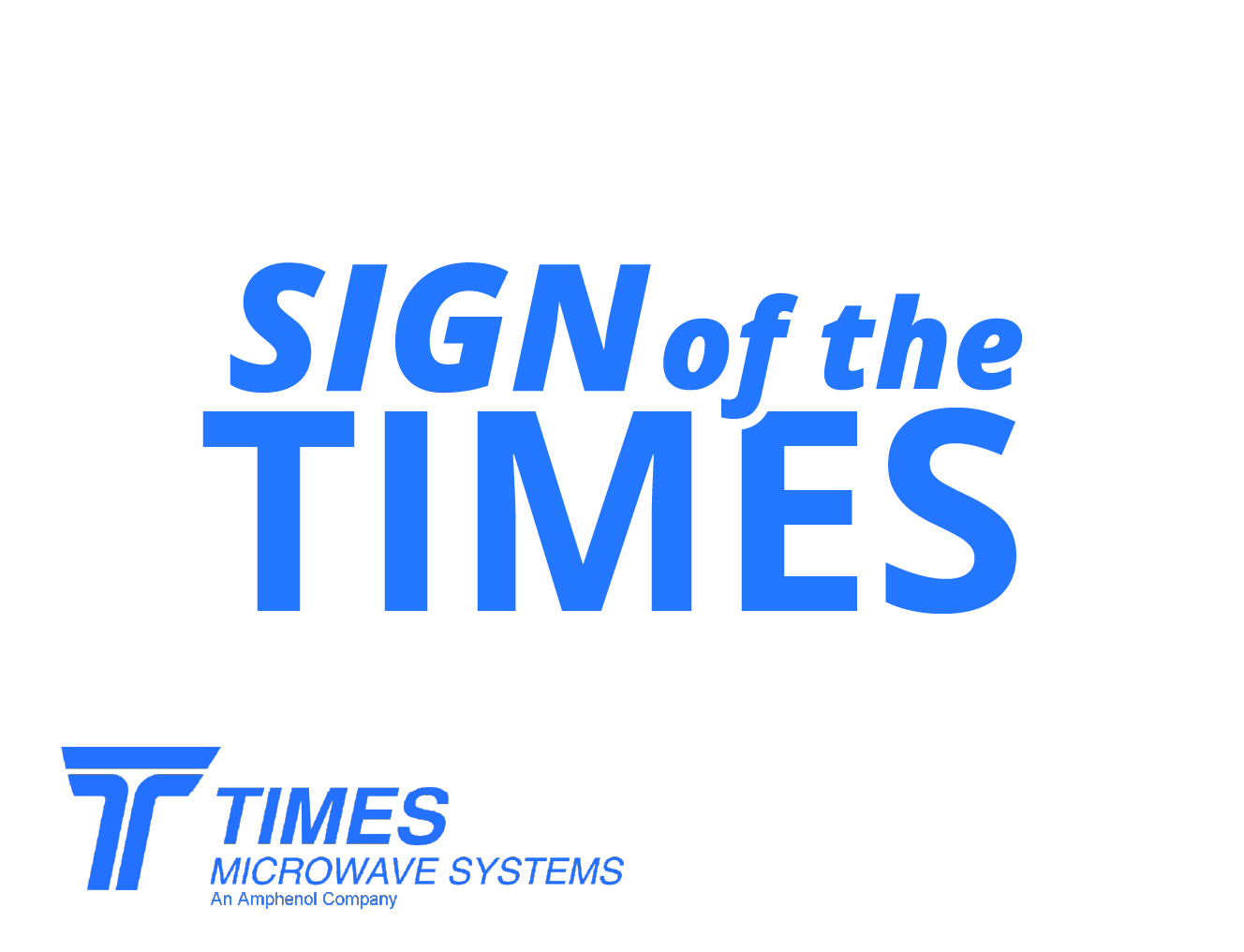
.jpg)
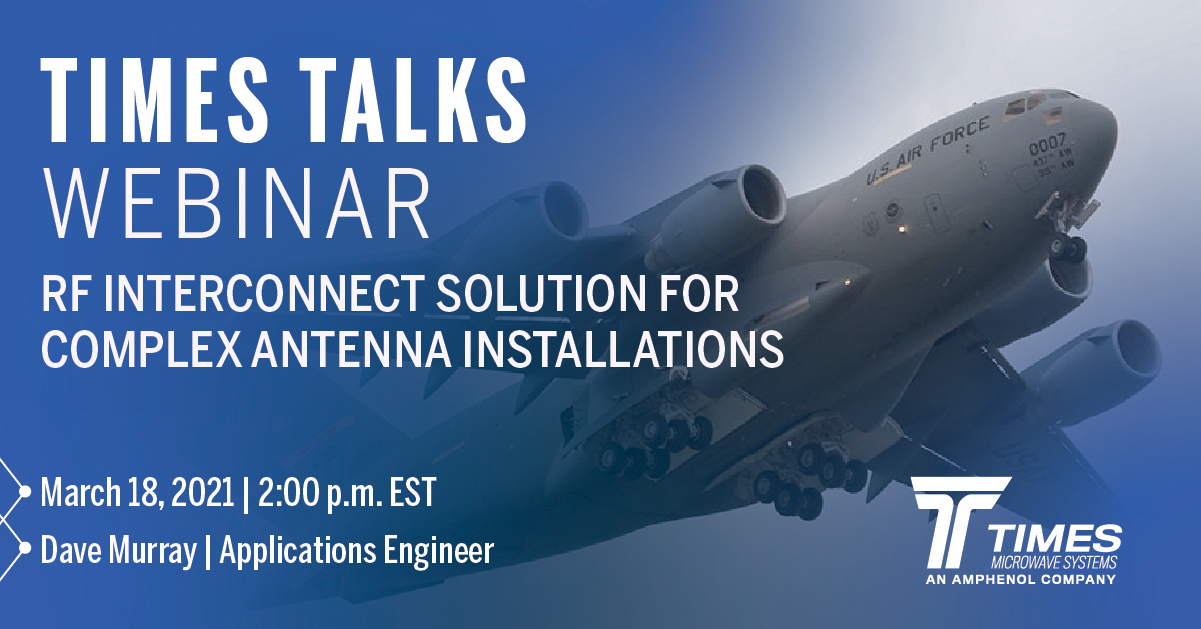
%20(1).jpg?width=1201&height=629&name=Webinar-Space%20(2)%20(1).jpg)
